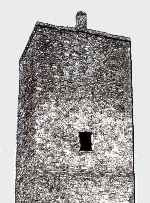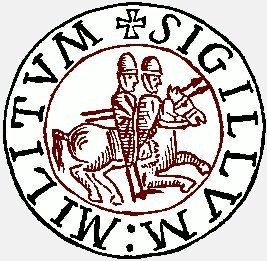
Templar Tours of Ireland
The History of the Templars in Ireland
When we think of the Knights Templar, we picture the Middle Eastern
Crusades or Dan Browne’s fantasy novel The Da Vinci code. However
this fascinating organisation were very much part of European
society in the 12th and 13th century with
houses, called preceptories, in most kingdoms in Medieval Europe.
After the Norman Invasion of Ireland the Templars became a part of
Norman society here for nearly 150 years. However like their
counterparts across Europe the Templars in Ireland were ruthlessly
suppressed amidst bizarre allegations between 1308 and 1310.
The Poor
Fellow-Soldiers of Christ and of the Temple of Solomon
The Poor Fellow-Soldiers of
Christ and of the Temple of Solomon,
better known as the
Knights Templar,
are one of the most controversial organisations in medieval European
history. Formed in the early 12th century in obscure
circumstances they were shrouded in secrecy for their 190 year
history. Their initial aim was to break with traditional non-violent
ethos of religious orders and take up arms to protect the recently
captured city of Jerusalem. They also vowed to protect Pilgrims
visiting holy sites in the Middle East. They became famous initially
due to their military exploits but during the crusades in
the
13th century they
gained more fame and in some cases notoriety for creating a medieval
Banking empire.
Although the most well-known,
the Templars were just one of
several similar Christian
Military Orders operating in Europe and the Middle East. Orders like
the Knights Hospitaller, the Teutonic Knights and the Iberian Order
of Calatrava,
fulfilled similar military functions to the Templars while sometimes
specialising in a certain activities. The Knights Hospitaller for
example as their name suggests specialised in looking after the sick
and wounded. These organisations were however at their core Military
orders who rose to fame fighting wars of re-conquest
in Spain (like the Order of Calatrava) or in the case of the
Templars or Hospitallers leading invasions of the Middle East.
While Hospitallers still
exist (in a very different form!) the Templars were destroyed in
1308 by the pope at the behest of the king of France, Philip the
Fair. After being savagely tortured, bizarre confessions were
extracted which lead to widespread fame and notoriety in medieval
Europe and a multi-million pound conspiracy industry today. This
purge in the 14th century caused scandal across Europe
including Ireland where the Templars had a significant operation.
The Knights Templar
in Ireland.
The Norman invasion of
Ireland in 1169-71 lead to the arrival of military orders including
the Knights Templar in the following decades. The Templars were
already established in England so it was little surprise they
followed the Norman armies to Ireland.
Medieval Ireland was clearly
situated far from the hotspots of the Templar military activity in
the Middle East but none the less they developed a substancial
presence in Ireland but due to the secretive nature of the
organisation little is known of their activities here. They owned
extensive estates of land and had numerous perceptories focused on
the east coast and Munster.
Their activities were limited to
the Norman colony in Ireland which by 1250 covered nearly 75% of the
island.
Although clearly supportive
of the Norman conquest the Templars were forbidden from killing
other Christians except in self defence so their military activities
in Ireland were very limited. Indeed the fact they are not mentioned
in any of the major Gaelic Irish annals illustrates they probably
had very little interaction with Gaelic Ireland outside the colony.
While their military activities were curtailed they did recruit
Knights to go to the Holy land while also pursuing their
increasingly vast commercial interest. Along with Knights Hospitaller
they were responsible for ensuring that the taxes from Ireland
arrived at the royal court safely. They also had quite profitable
farming enterprises– by 1308 the year of their suppression their
lands were worth £400 per year.
Banking & Problems
Arise
As
part of their commercial enterprises the Templars formed an
institution many regard as the origins of modern banking. With
Templar preceptories all across Europe they created a facility where
it was possible to deposit money in one preceptory in return for a
letter of receipt. This letter could be produced in any other
preceptory where the money would be reimbursed. In the world of
Medieval Europe where travel was dangerous this was very attractive
to the rich. This early banking system soon grew to enormous
proportions with 4000 Templars working in the Paris preceptory which
was their main financial centre. As their wealth increased they
began to loan money to monarchs all across Europe something that
would lead to their downfall.
Decline and fall.
In 1291 the last
vestiges of the Crusader states fell when the Mameluk Sultanate of
Egypt captured the city of Acre. With the collapse of the Crusaders
states The
Templars
were to an extent,
at a loss given their original goals was to defending the city of
Jerusalem and Pilgrims. In the
years immediately after
the fall of Acre they tried to reorganise another crusade but this
failed.
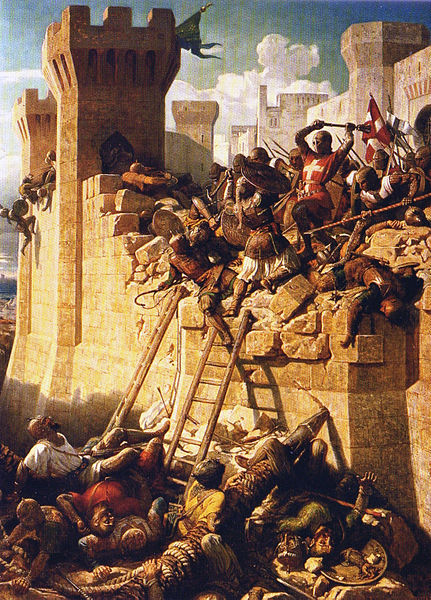
It was during this period
that Knights Templar loaned vast sums of money to the King of France
Philip the Fair. In 1307 Philip, unable or unwilling to repay his
debts, was presented with a chance of cancelling his debt by
destroying the Templars. Two years previously a Templar who had been
expelled made wild and almost certainly false accusations against
the Order. These included denying God,
spitting on the cross and worshipping idols. In 1307 Philip decided
he would use these to destroy his debtors by accusing them of
heresy. Philip who had total control over the
Pope
Clement V then living in Avignon, succeed in gaining papal support
for his endeavour.
On Friday 13th of
October 1307 Philip ordered the arrest of Templars across France and
had their property to be seized. These Templars were subsequently
tortured and admitted to numerous charges including idolatry and
homosexuality which shocked contemporary Europe. Philip then forced
the Pope
to order the arrest and suppression of the Templars all across
Europe and the Templars everywhere were doomed.
Suppression in
Ireland
On February 2nd 1308 the
Templars in Ireland were arrested and placed in Dublin castle.
Meanwhile their estates were seized by King Edward II after which he
leased them to close allies and associates. The Templars languished
in Dublin Castle for over a year until September 1309 five
inquisitors arrived in Ireland to oversee the case. This inquisition
comprised of 3 Dominicans, Richard Balyban, Philip de Slane and Hugh
Saint Leger accompanied by two Franciscans Roger de Heton and Walter
Prendergast.1
The Dominicans and Franciscans were selected as papal loyalists due
to the generous grants these orders had received over the previous
decades.
The
Trial got under way on February 6th and lasted 4 months
concluding on June 6th 1310. Taking Place at St Patrick’s
Cathedral just outside the walls of the city of Dublin.
It must have caused great
excitement around medieval Dublin. However inside St Patrick’s the
case presented was almost non existent. The Templars were charged on
several counts including: denying Christ, spitting on the cross,
homosexuality and worshipping idols. The evidence provided by the
witnesses the majority of whom were Franciscans or Augustinians was
almost as ludicrous as the charges. The strongest evidence was
presented by a certain Hugo Illuminator who claimed he saw the
Templar William de Warecome “turn his face to the ground at the
elevation of the sacrament not caring to look at the host” at the
Templar preceptory in Clontarf. It wasn’t not exactly a case
clincher.
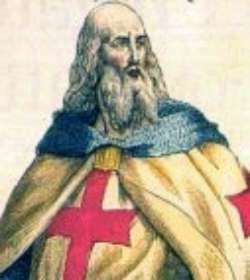
The cases in France had been marked by extreme torture that saw even the Grand Master of the Templar, Jacques de Molay, admit to similar charges.
Regardless, the Templars had no future whatsoever as an
organisation. Under the threat of war from Philip the Fair the
Pope
dissolved the Knights Templar in 1312 while lands owned by the Order
were passed to The Knights Hospitaller and individuals members of
the order became members of other church institutions. This all had
come into affect in Ireland by 1320. To ensure total annihilation
Philip then had the Grand Master Jacques de Molay along with dozens
of Templars burned at the stake in 1314.
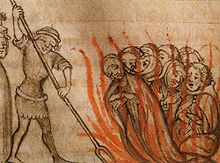
The trials in Ireland were nothing akin to those in France. Indeed
the lack of convictions probably reflected the fact that the
suppression of the Templars had little to do with events in Ireland
and made little sense. Indeed the Franciscan Friar John Clyn,
who wrote a history of Ireland a few decades later and lived through
the trials,
only notes the initial arrest of the Templars across Europe in 1308
and the disbandment in 1312. He does not mention the trial in Dublin
at all.
After effects
While Ireland escaped the worst excesses of torture and execution, the ideas and methodologies that shaped the trials of the Templars in France eventually found their way to Ireland. In 1324 the Bishop of Ossory oversaw the trial of Alice Kyteler and several associates for witchcraft in Kilkenny. This bishop Richard Ledrede levelled three of the charges very similar to those which the Templars were accused of, while he also used torture eventually burning one woman, Petronella di Midia, to death. The similarity is not coincidence, Ledrede spent years at the papal court in France before his appointment to Ireland in 1317 and no doubt was deeply influenced by what he heard and seen.
LATEST UPDATES
Knights of The Holy Grail ~ The Secret History of The Knights Templar Read more.......








